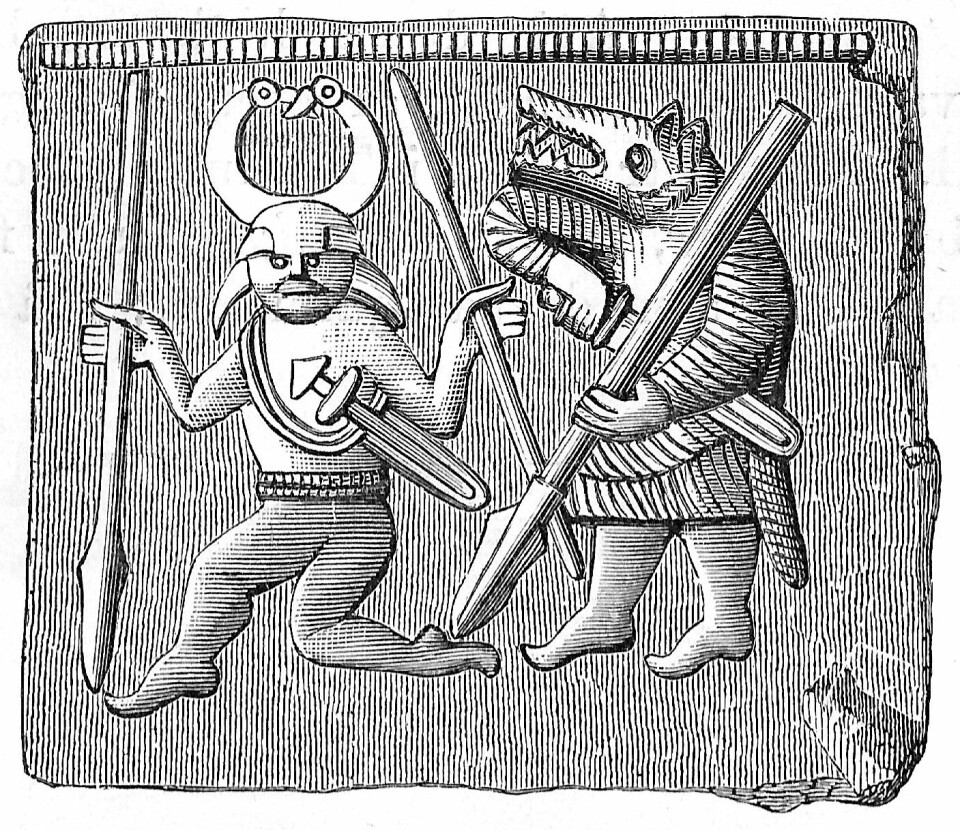
Crazed Viking warriors may have been high on henbane
The Viking warriors who went berserk may have been intoxicated with the plant stinking henbane, one scientist says. Norwegian experts have their doubts.
The phrase "going berserk" comes from a description of Norse warriors who went to war with a bloodthirsty anger that was so intense that neither friend nor foe was safe.
These warriors were called berserkers, and were described in Norse texts as "mad as dogs" and "as strong as a bear or bull". They were said to be so strong they could kill with a single blow.
They bit their shields, ate embers and would walk through fire, according to the Norwegian reference Store Norsk Leksikon.
Scientists have previously speculated that the fighters had been intoxicated by the hallucinogenic mushroom Amanita muscaria, commonly called fly agaric. Now researcher Karsten Fatur believes he has an alternative explanation, according to ARS Technica, which first wrote about Fatur’s research.
Probably not mushrooms
Fatur works as an ethnobotanist at the University of Ljbuljana in Slovenia. An ethnobotanist studies the relationship between plants and humans. He recently published a study in which he argues that berserkers were intoxicated by the plant Hyoscyamus niger, called stinking henbane in English.

The researcher based his speculation on descriptions of berserkers in various Norse written sources. Berserkers entered a trance-like state which was said to have started with chills and tremors before the warrior's face became swollen and red. Then the warrior would become enraged.

When the effect waned, the fighter would become ill, exhausted and emotionally numb, writes ARS Technica.
These symptoms, along with vomiting, sweating, acute confusion and seizures are similar to those you might have if you've eaten fly agaric, which is poisonous.
But Fatur believes it is more likely that if the warriors were indeed intoxicated, they were intoxicated by stinking henbane.
A historic flower
Stinking henbane was in use during the Viking era, says Anneleen Kool, a senior lecturer at the Natural History Museum (NHM) in Oslo who studies exactly how plants were used during the Viking Age.
“It is often found in excavations of Viking Age sites, and has been found in several places in Denmark, York, Dublin and Staraja Ladoga in Russia,” she wrote in an email.
For example, archaeologists have found traces of the plant in the grave of a sorceress in Denmark, she says.
Kool says the plant has been used over the centuries as a sedative, sleeping agent and to induce hallucinations. The plant is deadly toxic, and even though people did use the plant, it was not harmless, she said.
That's because it contains hyoscyamine and scopolamine, two substances that have a strong narcotic effect on the nervous system. If the seeds are heated, the two substances evaporate and the vapours may act like a narcotic. In all probability, the oracle in Delphi inhaled the steam from these seeds.
Both the plant and the fly agaric mushroom could have caused many of the symptoms ascribed to berserkers, but Fatur says violent aggression is not typical of someone who has eaten fly agaric. He points to other cases where plants related to stinking henbane, and that also contain the same substances, are said to have caused similar levels of aggression.

The anaesthetic effect of the herb may also have allowed the warriors to tolerate more pain than the average fighter, which may have given others the impression that they were almost invincible on the battlefield.
And because the warriors had headaches and blurred vision in the days following a battle, Fatur believes that this indicates that they had ingested substances contained in stinking henbane, and not fly agaric, which rarely causes side effects afterwards.
Just speculation
Kool thinks Fatur’s study is a bit speculative.
"But this is of course often the case, when we're trying to figure these things out", she said.
Kool however, thinks that Vikings would have never been able to succeed militarily if they were under the influence of drugs.
Fatur himself acknowledges that his proposal is only speculative and based on the sources he has available. There are currently no archaeological findings to prove his theory.
There may also have been other things behind the berserker trance. It may have been that berserkers were riled up by rituals, or that the trance was caused by epilepsy, mental illness or alcohol, according to the ARS Technica report.
The complicated berserkers
An overarching problem is that there is no clear definition for what the term berserker really means. The literal meaning of the Old Norse word "berserkr" is "bear-strong," and probably refers to clothing some warriors used to protect themselves in battle, according to Karoline Kjesrud, an associate professor at the Museum of Cultural History in Oslo.
“The word is often used to describe specific warriors or people with warrior-like qualities and is often related to their size and characteristics. A berserk is often synonymous with a giant and is often described as strong,” she wrote in an email.
But the word is also used in other contexts. In some cases it has been used synonymously with soldiers or fighters from distant lands. In the literature of the late Middle Ages, the berserkers have supernatural properties, she said.
“For example, they can change their shape and strength during combat, making them extra difficult to fight,” says Kjesrud.
As far as Kjesrud knows, there are no descriptions of berserkers ingesting anything special before going to battle. It is their strength and size that are emphasized.
She doubts that these fighters used a particular plant as a drug before they went to fight.
“Stinking henbane is mentioned in a couple of medical instructions dated to the late 1400s, but then as a medicine, for topical use as an aid to urination, and not as an intoxicating drug,” she said.
Kjesrud thinks there would probably be more evidence of its use in medieval sources if the plant had been explicitly used as a drug during warfare.
Reference:
Fatur, K.: Sagas of the Solanaceae: Speculative ethnobotanical perspectives on the Norse berserkers. Journal of Ethnopharmacology. (2019) (sammendrag)
———
Read the Norwegian version of this article on forskning.no
































